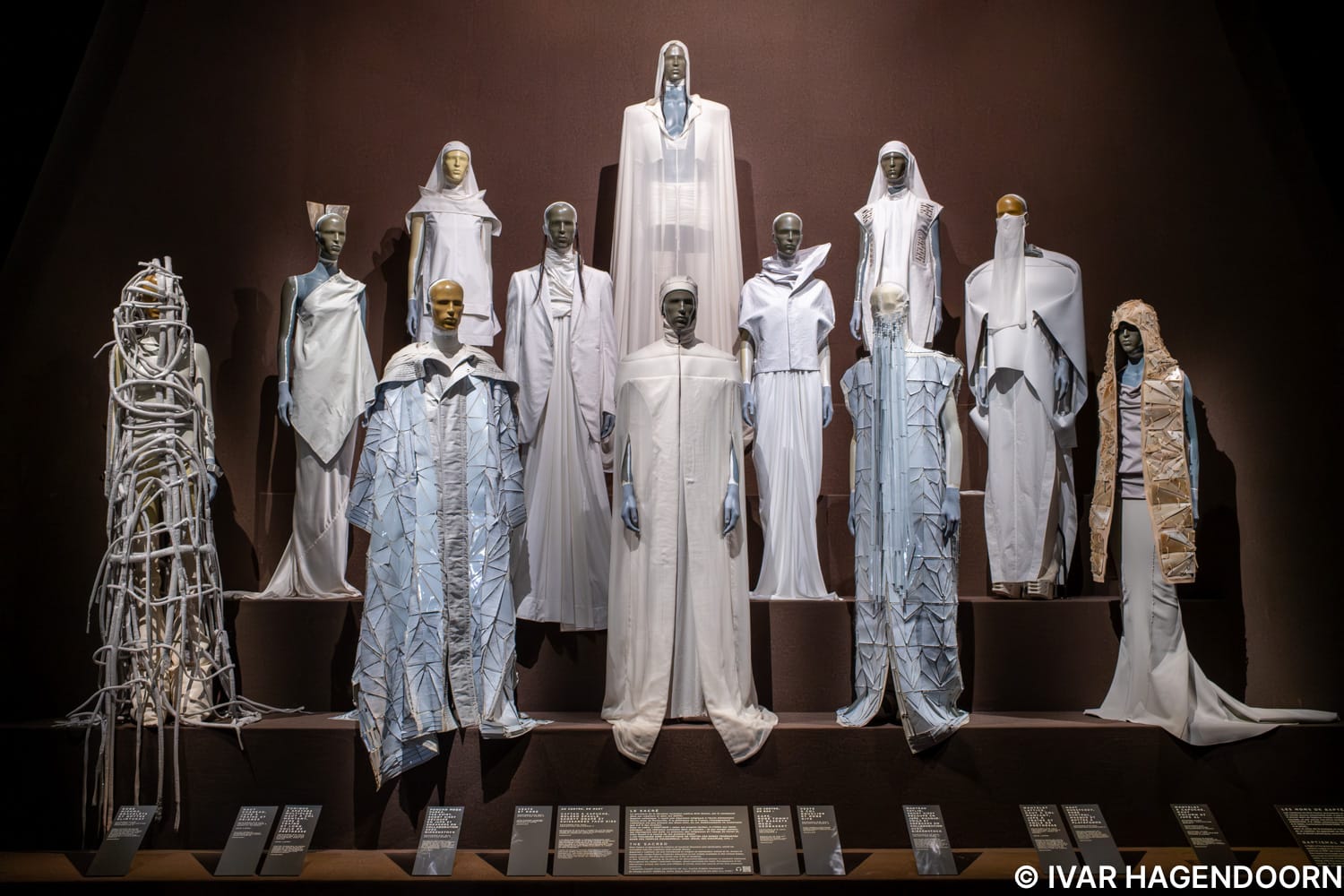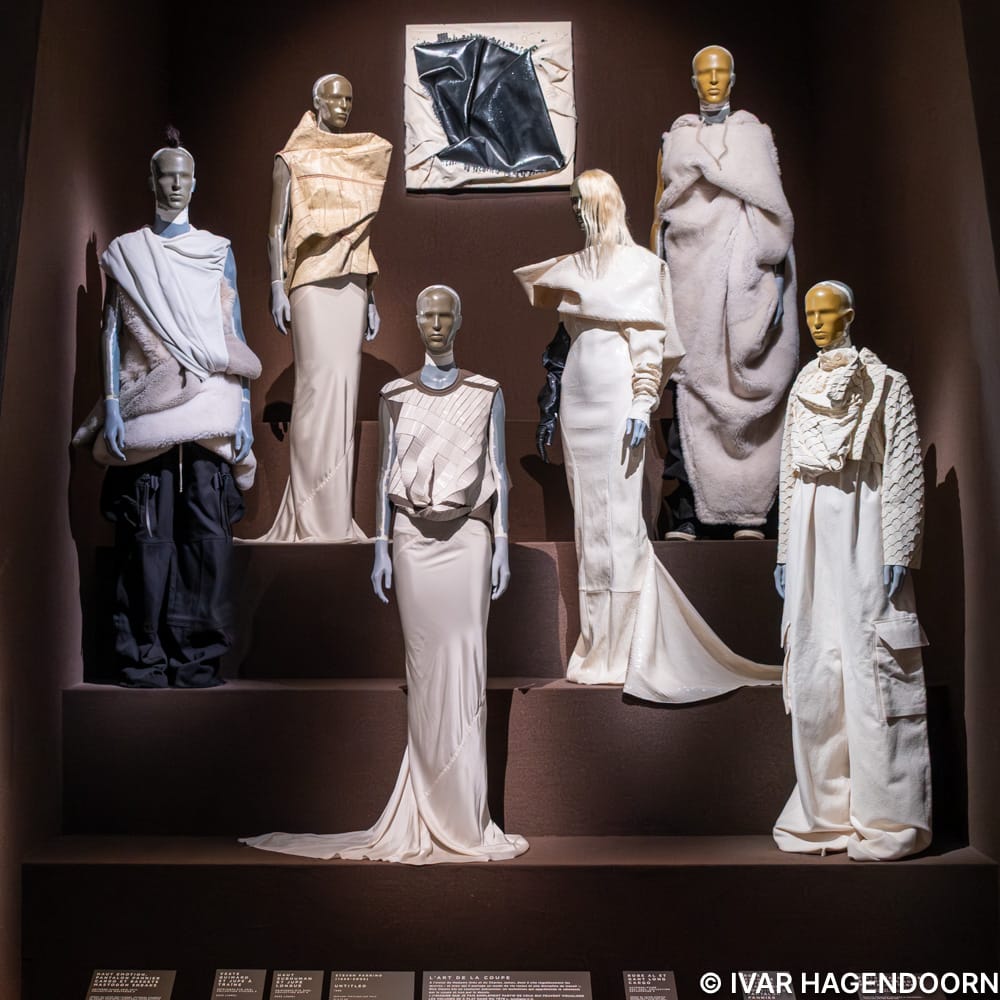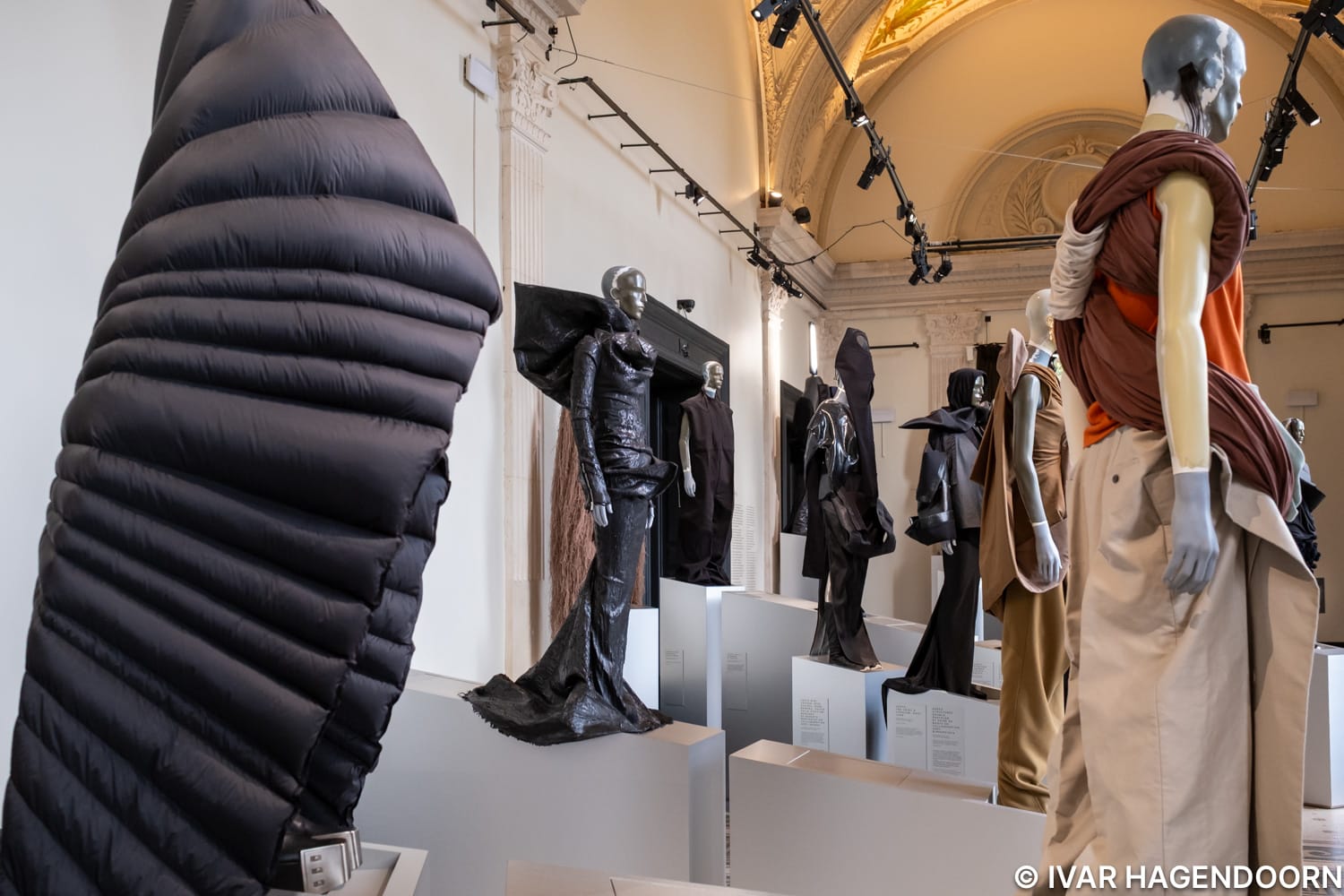
The Rick Owens retrospective at the Palais Galliera in Paris is one of the most anticipated exhibitions of autumn 2025. As always when I visit a fashion exhibition I greatly enjoyed seeing designs that I only know from photos and videos.
Rick Owens’s creative journey began in California, where a strict Catholic education and an early fascination with art, literature, and cinema shaped the foundation of his aesthetic identity. Through his engagement with 19th-century French literature and the glamour of early Hollywood cinema Owens cultivated a dual sensitivity to beauty and transgression that would later define his work. When he arrived in Los Angeles in 1980, he immersed himself in the city’s nightlife and countercultural scene, experiences that deeply marked his early fashion experiments of the 1990s. His raw, distressed designs, inspired by the fashion of the 1930s, reflected both the decadence and disillusionment of his generation.
By the early 2000s, Owens’s work began to attract international attention. His first show in New York in 2002 signaled his emergence as a distinctive voice in fashion, one unafraid to merge technical mastery with a dark romanticism. Relocating to Paris in 2003, he refined his vision into monumental, sculptural garments often likened to Brutalist architecture: severe yet sublime. The performative dimension of his fashion shows, presented at the Palais de Tokyo, which also happens to be one of my favourite art venues in Paris, further underscores the theatrical and philosophical ambition underpinning his oeuvre. By uniting aggression and grace, Owens established himself as one of the most uncompromising and visionary designers of his time.

From 2013 onward, Owens’s collections assumed an explicitly ethical and political dimension. His work interrogated issues of racial inequality, gender representation, and collective solidarity through choreographed performances that transcended conventional runway norms. Collections such as “Vicious” (2014), “Sphinx” (2015–16), and “Cyclops” (2016) functioned as visual essays on the body’s capacity for resilience and protest.
In recent years, particularly during the COVID-19 pandemic, Owens’s creations have taken on a contemplative tone. Presenting his shows in Italy, he reflected on mortality, time, and human humility. His later works introduced tenderness and introspection into his dark aesthetic, a meditation on love and tolerance as ultimate forms of rebellion. Even the natural fading of his textiles, displayed in daylight in one of the rooms at the Palais Galliera, becomes part of his artistic statement: a metaphor for decay, endurance, and the beauty found in imperfection.

"Temple of Love" offers an unprecedented insight into the world of Rick Owens. Curated and designed by Owens himself, the exhibition offers a full immersion into his world, a blend of the sacred, the brutal, and the intimate. Divided between shadow and light, it presents over a hundred creations, personal artifacts, and architectural installations that reveal both his creative evolution and private life, including an installation of his bedroom. The exhibition traces his evolution from Los Angeles to Paris, from rebellion to reflection. More than a retrospective, "Temple of Love" is an invitation to see fashion as autobiography, and beauty as an act of devotion and defiance. As Owens writes in the exhibition flyer: “I’ve done my best to offer an alternative to the standard cultural aesthetics within which not all of us feel reflected… I don’t reject or condemn anything. I just propose another option. I hope you can all find your own reflections somewhere in here.”
Rick Owens: Temple of Love is at the Palais Galliera in Paris until 4 January 2026.
Links
Dolce & Gabbana at the Grand Palais.
Iris van Herpen. Sculpting the Senses.
1997 Fashion Big Bang at the Palais Galliera.